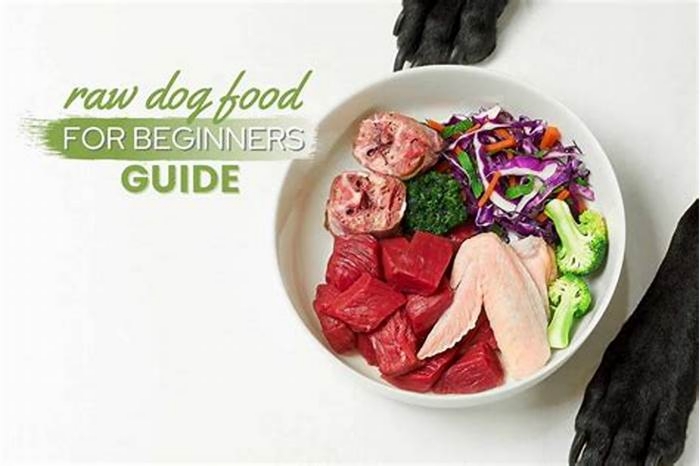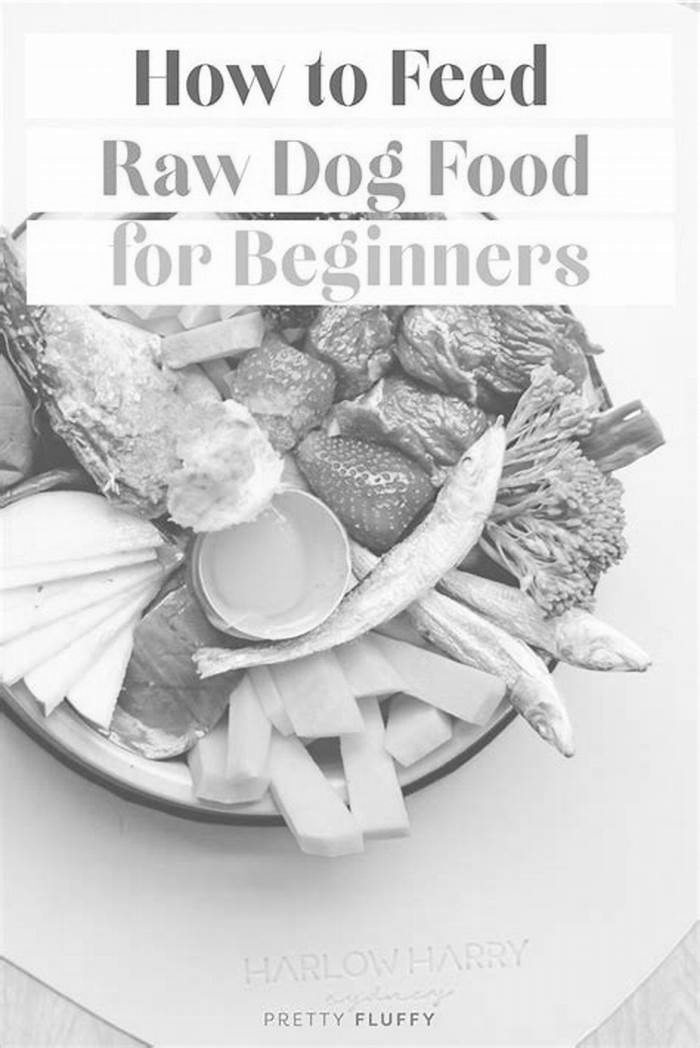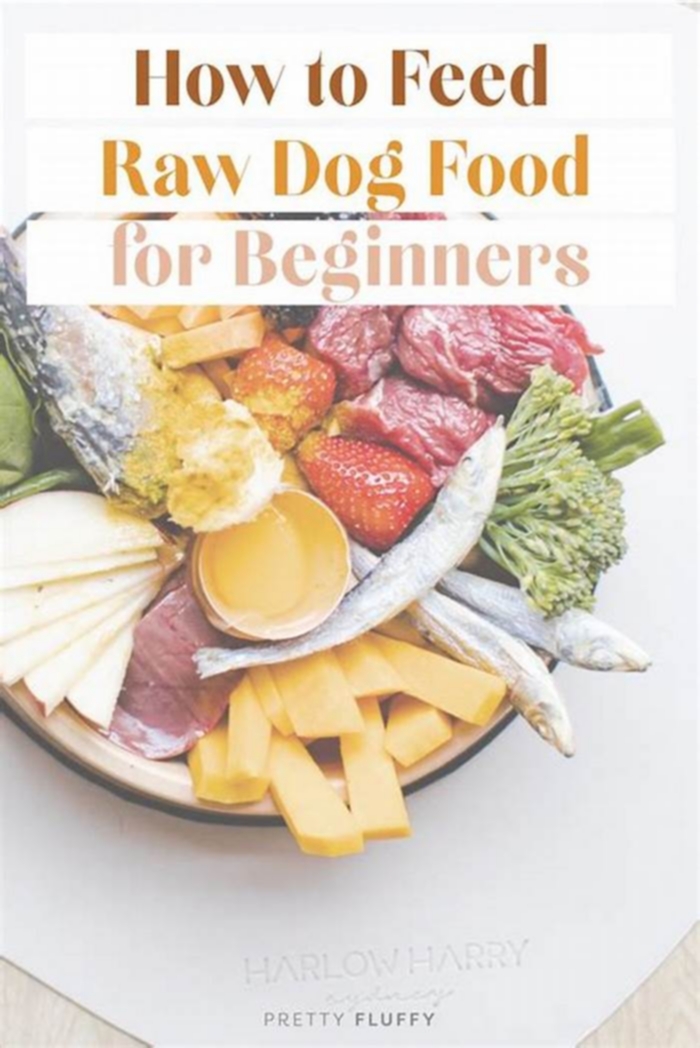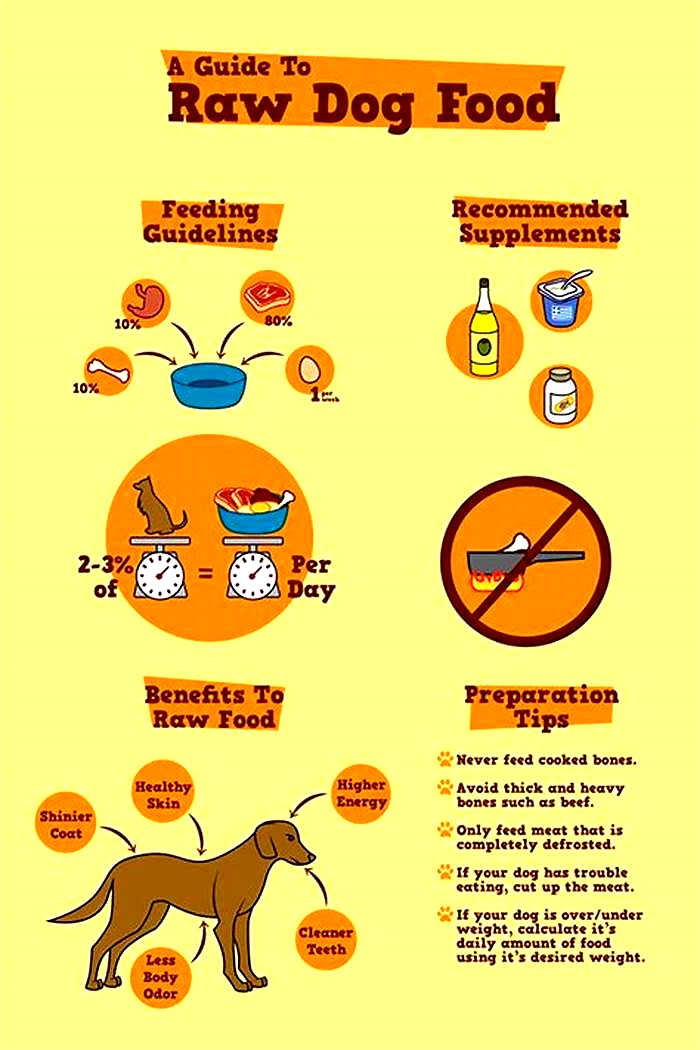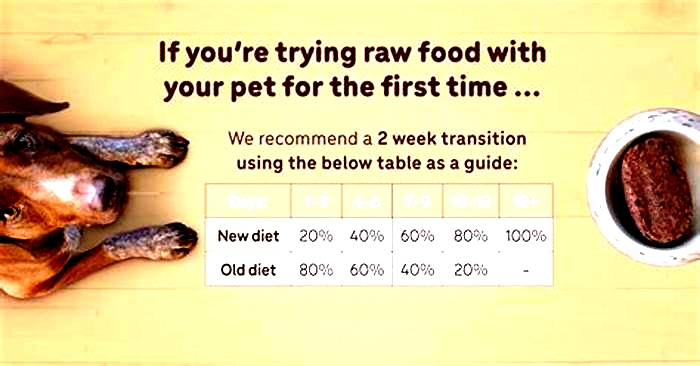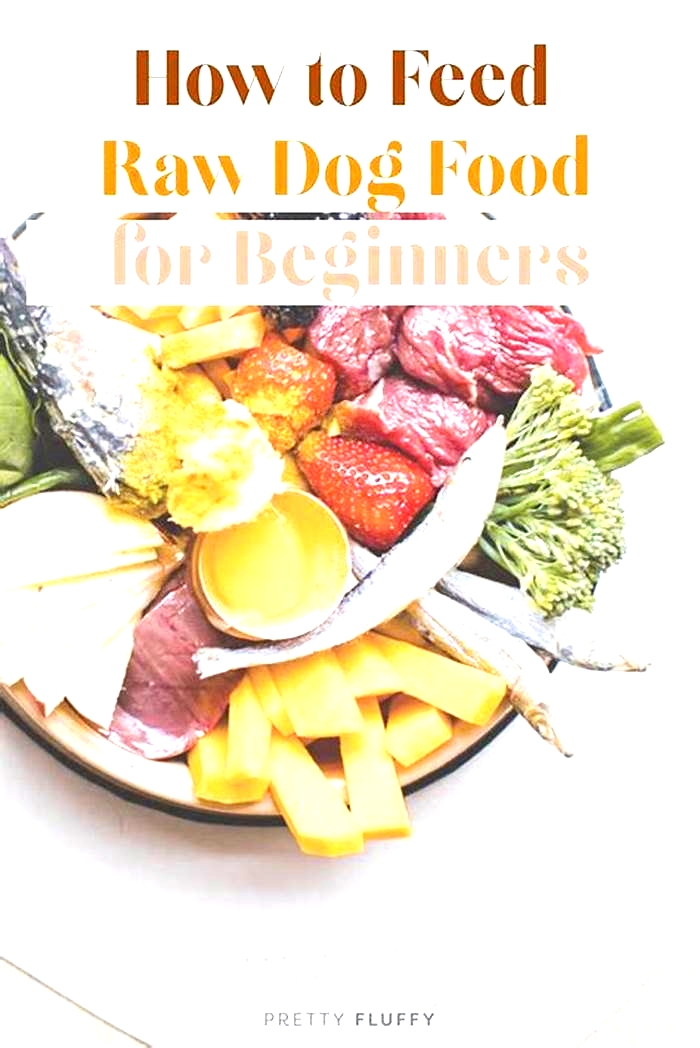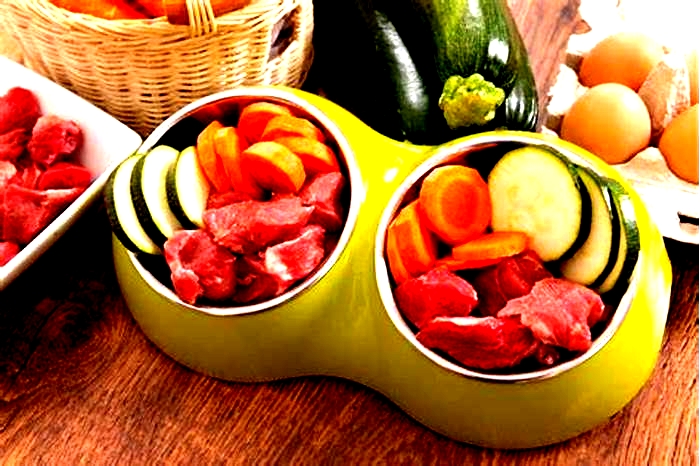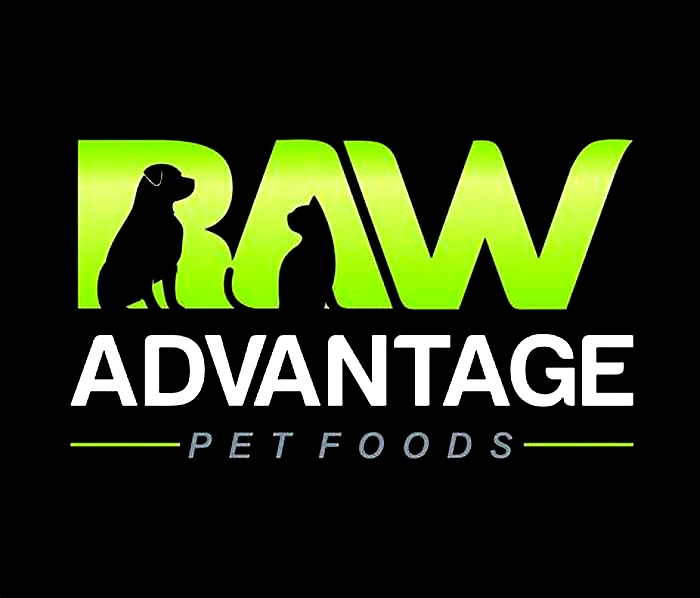Raw Feeding Excellence A Guide to Crafting Superior Dog Nutrition
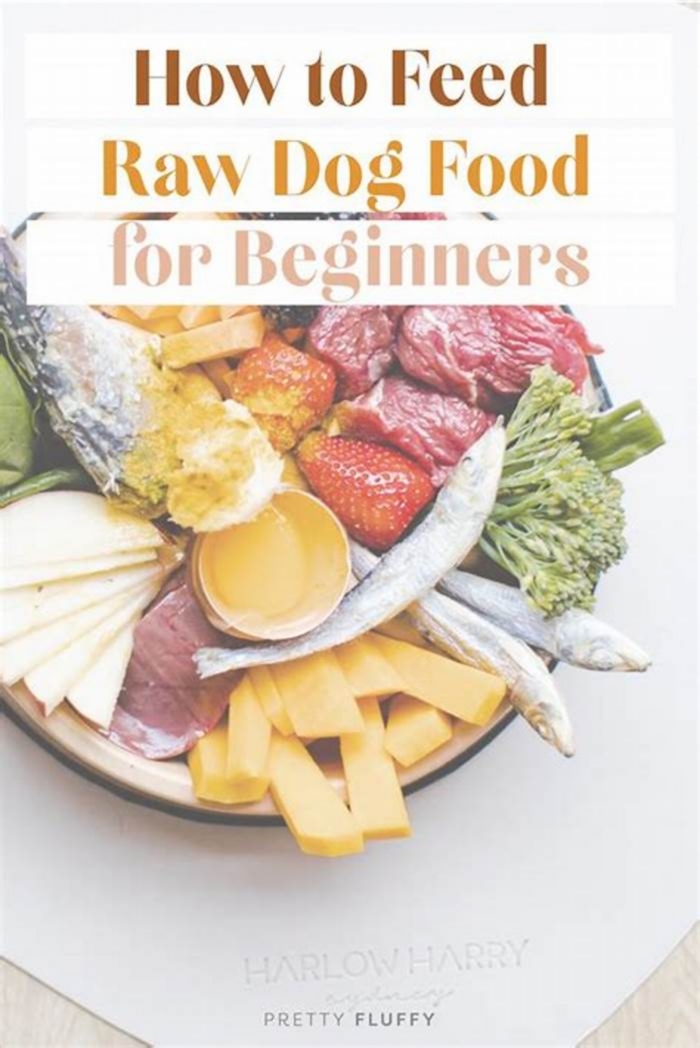
To start with feed one protein source (like chicken or turkey), one meat, for a week and keep a diary, slowly by week 2 introduce a new meat, (for example beef and beef GREEN tripe), combine for a week, and use this method to introduce other things like lamb, rabbit, etc.
See how your dog goes for a week. You will find you will become an expert at looking at dog poo as this is the best way of telling how your dog is doing. You will find that poos generally become smaller and better formed as they utilise more of the food that they are being fed. The perfect poo can vary in colour but should be like a small kickable non stick pellet.
For many starting out it can make a lot of sense to start with premade minces with everything already in it (a complete meal)
So what should I be aiming for? You want to aim to have a good varied diet, the more variety the better the balance and the less likely a chance of your dog missing out on something.
your aim [ratio]: 80% meat, 10% bone & 10% offal
Examples of things that are counted towards your 80% meat are: heart, tongue, cheek, skirt, off cuts, lung, diaphragm, trachea, gizzards, green tripe, brisket, stewing meat, fillets. Your 10% offal . 5% liver do include liver its essential. other 5% kidney, spleen, brain, testicles, pancreas.
A Starter Guide
People new to raw feeding all have the same questions: how do I start, what exactly do I feed?, how much do I feed? All too often, people are not given the information or confidence they need to begin and this is an unfortunate barrier to getting their dog off kibble, especially if their vet is against raw feeding. This is the guide that we give to all our dog adopters at K9 Rescue.
As you will learn, there really are only a few hard and fast rules in canine nutrition. No one has all the answers, not the pet food manufacturers, not the vets and not even the canine nutritionists. Yet what you will also learn, as you see the health of your dog improve and your dog start to glisten with health and vitality is that it doesnt matter. Just as we ourselves do not scientifically analyse what we eat, nor do we need to do it for our dogs.
When we first started feeding raw to our rescues at K9 Rescue in 2006, there was no pre-packaged raw food available. In fact, at that time, rawfeeding was a dirty word, and those feeding a raw diet were considered reckless by the many! As a rawfeeding rescue, inviting our adopters to feed a healthier raw diet, we might as well have been speaking Martian!
These days there are many rawfeeding options available to dog parents, with pros and cons to different approaches, perhaps for another post.
For the purposes of this guide, we will focus on preparing a homemade raw diet, consisting of meats typically available at the butchers or supermarkets often now referred to as the DIY raw diet. This DIY diet is often the cheapest way to feed raw, and most importantly from our point of view, allows you to be in control of all the ingredients, rather than having everything mixed in, which can be unhelpful for intuitive dogs, who for health reasons, may object to literally just one tiny ingredient in a pre-packaged offering. It also allows you to feed single proteins, rather than multiple proteins which is prevalent in the pre-packed offerings feeding single proteins is widely thought to aid digestion and also helps with the intuitive dog, who may be seeking specific energies of foods see our food energetics chart for more information.
| Note if you do have a dog that is very selective over what meats they want to eat, we recommend preparing a little buffet of small pieces of all different meat types, all spread out in a long line to give them equal standing and then seeing which meat they self-select first. This is often a really good indicator of what type of food energy your dog needs (warming or cooling) and you can build a diet plan from there. |
RAW FEEDING GUIDELINES
The key points to remember with a raw diet are:
- Balance over time one meal could have more bone content, another more meat or organ. The approximate ratio to aim for overall is:
80% meat, sinew, ligaments, fat10% edible bone5% liver5% other organ meat
- Meats are high in phosphorus, bones are high in calcium. When meat is fed with 10% bone you have the exact ratios of calcium to phosphorus required by a dog. Whole prey, fish, eggs and tripe have a balanced ratio.
- Organ meat should not exceed 10% of the diet overall and 5% of that should be liver (beef liver has the highest nutrient levels). Feed liver once a week (or several small servings per week) and try to find an organic, free range source if possible because the liver is responsible for filtering toxins out of the body.
- If feeding pork or salmon, be certain to freeze the meat for two weeks before feeding to reduce the small risk of parasites.
- NEVER feed cooked bones of any type as when bones are cooked they become harder and are dangerous for the dog as they can splinter and pierce the stomach or intestines. Raw bones are soft enough to bend and digest easily. Dogs are carnivores as per their scientific category (their DNA is 99% wolf) so dogs are designed to digest raw meat and bones they have a stomach PH level of 1 or 2 which is highly acidic perfect for digesting raw bones. It is therefore important to remember the difference between raw and cooked bones. For optimal safety, meal times should always be supervised.
- Feel free to feed weird and icky things such as chicken feet, beef trachea, tails, lung, kidney, testicles and pizzles (penis). Beef trachea, trim, chicken and turkey feet are loaded in natural chondroitin and glucosamine which help to build healthy joints.
- Avoid the weight bearing leg and knuckle bones of large animals such as beef also the vertebrae as these are too dense and dangerous to teeth. Remember! ALL bones must be fed raw cooked bones are dangerous as they are too hard and could splinter and pierce the stomach or intestines as well as damage teeth.
- If possible, try to find grass fed animals that are not given hormones or medications if possible. Younger animals in general will have accumulated fewer toxins to pass on to your dog. You can be creative, approach organic and free range farmers and ask to buy their off-cuts.
- Carbohydrates, in particular grains, are not a natural part of the dogs diet and we do not recommend they form any part of the diet. Dogs do not have the ability to digest grains properly, so instead, an extra strain is put on the liver as it has to produce more bile to break down the insoluble fibre.
| Russell Swift, D.V.M. feels that grains suppress the immune system. Grains are mucous forming and provide an ideal environment for parasites to thrive in. Grains also contribute to the formation of dental plaque and tartar on the teeth, as well as bad breath and flatulence. Dr. Swift details how cats and dogs have no dietary requirements for carbohydrates nor are they equipped with the teeth to process them. |
- HOW MUCH TO FEED
Most dogs eat around two to three percent of their ideal adult weight per day.
So for example:
| 2% of adult weight: | 3% of adult weight: | |
| 30kg dog: | 30,000g x 0.02 = 600g of food | 30,000g x 0.03 = 900g of food |
| 20kg dog: | 20,000g x 0.02 = 400g of food | 20,000g x 0.03 = 600g of food |
| 10kg dog: | 10,000g x 0.02 = 200g of food | 10,000g x 0.03 = 300g of food |
Initially, when switching your dog to raw, we recommend starting with 2% of body weight and splitting the daily amount as follows:
- over 6 months old split into 2 meals per day
- for 4-6 months old split into 3 meals per day
- for under 4 months split into 4 meals or more per day
Once your dog has been on a raw diet for two or 3 weeks and the stool is fine, dogs over 1 year old should be switched gradually to one feeding per day as it is better for their digestion when on a raw diet. If your dog regularly does not eat all of his meal in one go, then you know you are feeding too much and should adjust accordingly.
Once established on raw, then you can increase the amount of food to 2.5% or 3% of adult body weight depending on your dog. If your dog is very active, you may need to feed a little more than 3%, or if your dog is more of a couch-potato, you may need to feed a little less than 2% every dog is different. The best way to tell if you are feeding the right amount is to run your hands over your dogs ribs. If you can feel the ribs, yet not see them, your dog is at a good weight.
Puppies
Puppies should receive about 2-3% of their ideal/expected ADULT weight split into 3 or more meals per day depending on age. When puppies are four to six months old, they require a great deal of food and a little extra edible bone as they are building their adult teeth. Do not let puppies get too thin at this important age as their energy demands are tremendous when cutting new teeth.
iii) WHAT TO FEED
One common concern with raw feeding is that it is not complete and balanced. This is untrue for two reasons. Firstly, no one truly knows what complete and balanced is for a dog, so it is difficult to make this claim. Secondly, balance can occur over time just as we do with our own meals; every meal does not need to be completely balanced as long as the nutritional needs of the dog are met over the long term. You dont calculate the exact percentages of protein and carbohydrates, or the exact amount of vitamins and minerals in each of your own meals, and you dont have to do it with your dogs meals. If you feed a variety of meats and organ meats, then it will balance out over time.
Starting Out Gently
It is a commonly believed myth that dogs switching to a raw diet will experience diarrhoea in the first few days or weeks. This is a myth and is solely caused by an over-zealous approach to the switch to raw food which can cause diarrhoea and/or constipation.
Some robust dogs (such as former street dogs) can usually handle just about any raw food that is given to them, yet other dogs, particularly those that have been on kibble for several years, or who may have an underlying medical condition, need a gentler approach, so it is this gentle approach that we detail here
1) Choose a meat type to start off with usually something that is easy to obtain and an acceptable price to you, such as chicken. We usually start off with just one item, and get the dog used to that first.
| Note for dogs needing a hypoallergenic diet, there are only two meats considered to be hypoallergenic: Venison which is heating (for those who are chilly, needing sun or a place by the fire, and Rabbit which is cooling, often for those with inflammation or those seeking the shade, or a cool place. See our food energetics chart for more information. |
2) Assuming you will start with a supermarket style prepared chicken (i.e. gutted, and without head, feet etc) then this chicken is around 33% bone in total with the breast portion being less bone, and the bony parts, such as the wings, being higher bone.
So start with a section of the breast, cut a piece according to the size of your dog that includes breast meat and the ribs remove the skin for now. Feed this portion for a day or so, storing the rest of the bird in the freezer for later use. Then check your dogs stools you are looking for stools that are not too loose and not too firm, just like Goldilocks, you are looking for just right.
3) If stools are okay, then you can start to introduce cuts of the whole bird bearing in mind that the bony parts such as wings and drumsticks are much higher than the 10% bone recommendation, so you will need to add some breast meat to balance the ratios in these early days.
4) If stools are ok with all parts of the chicken, continue to feed for two or three weeks before considering choosing another meat type. Whichever meat type you choose next, follow the same slow, introductory procedure.
5) Some dogs may object to one meat type, yet adore another. If you are having difficulty getting your dog to accept chicken for example, try a different meat source and come back to chicken once fully established on raw.
6) Once your dog is fully established on raw food, then you can start to add in a little organ meat. Liver is an essential part of the diet, so we recommend starting with that. Organ meats, particularly liver, can cause loose stools, especially if too much is fed too soon, so again, depending on how robust your dog is, start with a tiny piece and build up slowly to the full 5% of the diet by checking stools at each increase.
7) Repeat the process for other organ meats. Heart meat can be fed as muscle meat, although not exclusively.
Puppies & Bones
Puppies adapt quickly and can be weaned onto raw straight from the dam from about three weeks of age they start to take an interest in what their mother is eating, by six weeks of age they can eat chicken carcasses, rabbits and fish.
During the brief interval between three and six weeks of age it is advisable to provide minced chicken, ground chicken carcasses or similar (the meat and bone should be minced together). This is akin to the part-digested food regurgitated by wild carnivore mothers. Large litters will need more supplementary feeding than small litters. They should also have access to larger pieces to start to encourage them to rip and tear to build jaw strength. Meat off the bone can be fed, but only for a short time, until they can eat meat and bone together usually at about six weeks of age.
From six weeks of age, you can start off with meaty chicken ribs and chicken wings as the bones are not too dense so are considered soft for puppies to build up jaw strength plus some muscle meat to make up the ratios. Some raw fish is also a good starting food for puppies as the bones are also nice and easy. To help them get their small teeth into it, just slice into the meat a bit so they can chew into it easier. Chicken skin in particular should be sliced as they find that hard to chew through as its stretchy!
Chicken wings should have the wing tip cut off at the third joint, as if the puppy is tempted to swallow it whole, the double joint of the wing is a major choking hazard.
Between four and six months of age puppies cut their permanent teeth and grow rapidly. At this time they need a plentiful supply of meaty carcasses or raw meaty bones of suitable size.
Orphaned Puppies
Use Goats milk, as fresh from the goat and unprocessed as possible. It can be fed 1:1 i.e. 50% whole raw goats milk/ 50% pure water (such as spring, filtered, or pre-boiled water) or whole raw goats milk can be fed without diluting it it really does depend on the health of the puppies. Some will find undiluted goats milk too rich and give them diarrhoea, others are fine with it. We recommend to start with diluted, check the stools and over time work up to whole milk. Whichever you choose, diluted or whole milk, add one egg to 1 litre of milk (or milk dilute) once the pup is happily established on the goats milk.
The milk should preferably be raw/unpasteurised and not boiled. Once youve made up the litre and beaten egg, then store in the fridge in a glass/china container (not plastic). As you need it, pour out what you need and warm it just a little to replicate moms milk temperature. Goats milk is a perfect substitute as it is much closer to bitchs milk than cows milk which most puppy milk replacers are made from we have raised many orphaned litters this way, some from as young as 2 days old.
Raw goats milk will also still contain a certain amount of antibodies as they are not just contained in the post-birth colostrums. It is therefore preferable for the milk to be raw, and from a goat that is as naturally reared as possible, i.e. preferably pasture fed/free range obviously practicality reigns on this, just to say the more natural the milk, the more beneficial to the puppies. At around 3-4 weeks old, you can start to offer some raw meat alongside the milk and egg, usually minced meat, and then build up to full raw food over the coming weeks as detailed in the previous section.
- SAMPLE MENU STARTING OUT
For a 15kg adult dog at 2% 15,000g x 0.02 = 300g of food per day
| Morning | Evening | |
| Week 1 | 150g bone-in chicken breast | 150g bone-in chicken breast |
| Week 2 | 150g chicken thigh & breast meat | 150g chicken thigh & breast meat |
| Week 3-4 | 150g small chicken quarter with beef trim | 150g small chicken quarter with beef trim |
| Week 5-6 | 150g chicken wing & beef trim | 150g chicken wing & beef trim |
| Increase food to 2.5% 15,000g x 0.025 = 375g of food per day | ||
| Week 7-8 | 225g small chicken quarter with pork meat | 150g small chicken quarter with pork meat |
| Week 9-10 | 225g pork ribs with beef trim plus occasional raw egg | 150g pork ribs with beef trim |
| Week 11-12 | 275g pork ribs with beef trim and tiny piece beef liver | 100g chicken wing & breast meat |
| Week 13-14 | 310g pork ribs with beef trim and 15g beef liver | Alternate 50g small chicken breast with ribs or whole egg |
| Week 15-16 | 285g pork ribs with beef trim 25g kidney & 15g beef liver | Alternate 50g small chicken breast with ribs or whole egg |
| Week 17-18 | 335g chicken quarter, 25g beef heart & 15g beef liver | Training treats (e.g. slow baked organ or meat slices) |
| Week 19-20 | 295g chicken quarter, 50g heart, 15g kidney & 15g liver | Training treats (e.g. slow baked organ or meat slices) |
Notes:
the main meal can be either morning or evening in this example it is in the morning.
only change the menu each week if stools are ok, if not, keep to the same weeks menu until they are ok, before proceeding.
when introducing any new meat or organ meat, test with thumbnail pieces first, and check stools before slowly increasing.
when introducing egg, test with a small amount of beaten egg first, and check stools before increasing to a whole egg. Eggs can be served whole, and used as a complicated meal where they have to figure out how to get at the contents. Sometimes you have to make a tiny hole in the shell so they can smell the egg inside and figure it out.
| Remember, youre aiming for: 80% meat, sinew, ligaments, fat, can also include heart meat10% edible bone5% liver5% other organ meat So for 375g of food a day this equals: 300g meat, sinew, ligaments, fat, heart meat37.5g edible bone18.75g liver18.75g other organ meat These measurements dont have to be exact, just to bear in mind. |
- AIM FOR VARIETY
- Raw bones are living tissue composed of living cells and just like any other part of the body, they are a complex source of biologically balanced minerals, especially calcium, yet also copper, iodine, iron, magnesium, zinc, and manganese. It is highly probable that bones in a dogs diet play a similar role to fibre, that is, a role of bulking out the food, thereby removing toxins and promoting general bowel health. The easiest way to provide balanced calcium is by feeding raw meaty bones that have around 10% edible bone in them such as whole chickens, halves or quarters, with perhaps some extra meat added in to allow for the bird having being processed (i.e. the innards missing) a whole processed chicken is considered to be 33% bone, with some parts higher in bone content such as the wings (46%) whereas the bone-in breast portion is lower, perhaps 20%.
- Raw, meaty bone choices all poultry, pork, lamb/mutton, cow, deer, fish etc. Whilst the flesh of any animal is fine, bone type should be restricted to the type of animal a dog pack could realistically hunt in the wild a cow would be unlikely and the bones are said to be too dense for a dogs teeth (especially small dogs) so could cause teeth chipping or breakage. Common cuts can include chicken backs, wings and necks (or even whole carcasses), lamb necks, pork necks, turkey necks, pork hocks, pork ribs, ox tails, turkey tails, even lamb, pork or poultry heads for the adventurous; any meaty bone that can be completely consumed by your dog in fact. If you are feeding meaty parts then you can feed them alone, if your choices are bonier (such as chicken backs, pork necks, wings or ribs), then you will need to add meat or heart to correct the ratios. Basically, you are trying to replicate whole prey, so look at what youre about to feed and visualise the actual bone content if a third or even half of it would be bone, then you know you need to add more meat. Remember you are aiming for 10% bone, although for robust dogs there is some tolerance for slightly higher bone content.
- Whole prey, as the name suggests, is the whole ungutted animal or bird. Depending on the size of the dog, this could be anything from small birds to a rabbit or hare. Some people feed larger prey and then remove what isnt eaten and store for the following days until the whole prey is eaten.
- Raw muscle meat from a variety of sources should be fed daily. You can feed heart as a muscle meat yet not exclusively. Cheap sources are waste trim from the butcher this is often fatty, yet also has some lean, sinewy content. Muscle meat is a great source of protein, and protein contains essential amino acids, the building blocks of your dog. Muscle meat also contains a lot of phosphorus and is low in calcium. When fed with 10% bone you have the exact ratios of calcium to phosphorus required by a dog. Free range grass-fed meat is also rich in omega 3 and beta-carotene intensively farmed grain-fed meat has very little, if any.
- Raw Fat is an excellent natural source of energy for a dog, however too much fat too soon can cause loose stools so you need to build up fat content nice and slowly this includes chicken skin which is considered a fat, so for sensitive dogs should be removed in the early stages of rawfeeding.
- Raw fish (preferably whole, small, oily fish) can be fed for one or two meals per week. You may also opt to feed fish body oil such as Salmon oil. This supplementation is recommended if the meat you feed is not grass-fed because grain-fed animals lack Omega-3 fatty acids which protect the dogs joints and immune system. It is preferable to feed smaller whole fish, than portions of a larger fish since the mercury and toxin levels in fish are a concern.
- Raw offal (organ meat such as liver, heart, kidneys, brains, lung, pancreas, spleen) from a variety of meat sources should be fed for one or two meals per week or 10% of the diet. Some dogs do not like the texture of organ meats and need to have it lightly seared to change the texture. Other dogs dont tolerate offal in larger quantities well, so it may be best to divide it up and feed a little each day to avoid loose stools. Liver is particularly important and should form 5% of the overall diet as it is the main source of water-insoluble vitamins in organs that a dog needs. Organs in general provide an enzyme-rich mixture of protein, B-complex vitamins, vitamins A and D, vitamin E, some vitamin C, and essential fatty acids EPA, DHA, and AA, along with minerals such as manganese, selenium, zinc, potassium and copper. Like muscle meat, organs contain a lot of phosphorus (and potassium) and are low in calcium.
Essential organ meats in particular:
Liver has a vast range of important nutrition it has the most concentrated source of vitamin A as well as vitamins D, E, and K in substantial quantities. Liver is an excellent source of the minerals zinc, manganese, selenium and iron. It also contains all the B vitamins, particularly B1, B2, B3, B5, B12, biotin, folacin and is a good source of vitamin C. Liver provides a source of good quality protein and the essential fatty acids, both the omega-3 and omega-6 type. Its a fantastic food for your dog!
Kidneys supply good quality protein, essential fatty acids and many vitamins including all the fat soluble vitamins A, D, E and K. Kidneys are a rich source of iron and all the B vitamins. They also have good levels of zinc.
Heart is an excellent source of protein, B vitamins and iron. It contains some essential fatty acids and a little vitamin A. Heart contains good levels of taurine which is an important food for the heart!
- Raw whole eggs with shells (a perfect ratio of phosphorous to calcium) can be fed two or more times per week. You might have heard that raw egg whites contain a protein that binds with biotin and that is true. To avoid deficiencies, feed the entire egg, yolk and everything. The yolks are where most of the nutrition is found anyway. Egg yolks are an excellent source of magnesium, calcium, iron, folate, vitamins A, E and B6 and free-range eggs have lots of beta-carotene. If you buy your eggs commercially, they are likely sprayed with wax and other chemicals to improve their appearance. These chemicals are harmful for your dog so if you cannot find fresh farm eggs, feed commercial eggs without the shell and count them as a meat meal.
- Raw green tripe has long been quoted as being the finest of natural foods. It should be unprocessed, unbleached basically straight out the animal and is a great food as it is the edible lining and accompanying content of a cow or other grass eating animals first or second division of the stomach. Paunch tripe comes from the large first stomach division and honeycomb tripe comes from the second division. Both wild canids and domestic dogs benefit from eating tripe as it contains a very diverse profile of living nutrients including digestive enzymes, omega- 3 and 6 fatty acids, vitamin B, probiotics, and phytonutrients. Raw tripe is considered as meat yet has a very good calcium/phosphorus ratio its not an essential part of the diet; yet is extremely nutritious if you can get it. Tripe should be from grass-fed herbivore animals (not grain fed) to get maximum nutritional benefit.
- THE DETOX
You may have heard of dogs detoxing when they first start a raw diet. This all depends on the current health levels of the dog, particularly how many toxins it has been exposed to, and this in particular includes the number of vaccines, heartworm medications, flea preventatives etc they have been given which all have chemicals in them that are difficult for the dog to expel from the body.
With the increased health that raw provides, occasionally this build up of toxins will start to be excreted, usually through the bodys largest organ; the skin. Typically, this will present itself as unexplained itchy skin, itchy ears with or without discharge and runny eyes. These are all signs that the body is cleaning itself naturally and no oral steroid or injections, antibiotics or topical treatments are needed, and in fact, if used, will suppress the detoxification process and cause it to internalise into the major organs to cause organ disease later in life. Please see the herbal health section for more information.
Raw Feeding Summary
Overall, raw feeding is quite simple. If it still seems complicated, try to visualize a rabbit or bird whole, before it gets cut up and put into containers. Try to feed your dog the rough percentage of bone, meat and organ meat that would occur naturally in this animal. This is what we strive to recreate for our dogs diet.
Remember to feed a variety of meats, not just different parts of a chicken or turkey. Over time try deer, pork, rabbit, goat, duck, turkey, beef, a variety of fish and any other meat that you can get cheaply.
As you have read, there are only a few guidelines to follow. With time, you will become more comfortable with your dogs new diet and you will start to see the results in the form of better coats, cleaner teeth, fresher breath and fewer health issues. Switch to a raw diet and feel confident that you will be joining thousands of people who have safely and effectively made the leap to raw and have never looked back.
No matter what breed it is No Matter what their size
We wish you happy raw feeding with your lucky dog!
Health benefits of rawfeeding:
Natural food equals natural health and helps provide the essential building blocks of a strong immune system!
After just a few weeks of rawfeeding you will start to see an improvement in their health. After a few months the benefits are incredible and the list of health benefits are endless!! Heres just some of the benefits Ive experienced with my own dogs:
- Enjoys their food and looks forward to meal times with excitement.
- Helps create a stronger, healthier immune system so more resistant to disease and ill-health much cheaper vet costs, if any.
- Shiny healthy coats.
- Sweet smelling skin (no doggy smell) I never need to bath my dogs other than for a mud rinse off.
- Pearly white teeth, healthy gums and sweet breath (no tooth decay, or periodontal disease, therefore no infection on the gums and no bacteria swallowed with every gulp of saliva, this in turns leads to reduced chances of heart, kidney and liver disease.)
- Better concentration with commands and less hyperactive yet more energy.
- Easier to keep at the right weight.
- Better muscle tone.
- Smaller poops.
- More mental stimulation eating dinner when they have to figure out how to attack it helps to stop boredom.
- No parasites (I dont use any flea preventatives, I just occasionally use a neem herb spray instead and my dogs never have fleas,as fleas/ticks like unhealthy bodies) so no need for harmful neurotoxins for flea/tick control.
- No need for harmful chemical dewormers again due to the added health from raw food; worms are prevented by the healthy immune system.
- No metabolic problems
- Its cheaper in the short term if you buy wisely
- Its cheaper in the long term as vet bills are dramatically reduced in the first 1o years of any of our dogs raw fed lives, we have rarely, if ever, needed a vet for anything other than wellness checks.
In general dogs that eat raw are more balanced. Even their characters improve. Any raw feeder that has switched from commercial will tell you this.
Further reading: Vitamins and Minerals Present in the Components of Raw Diet

